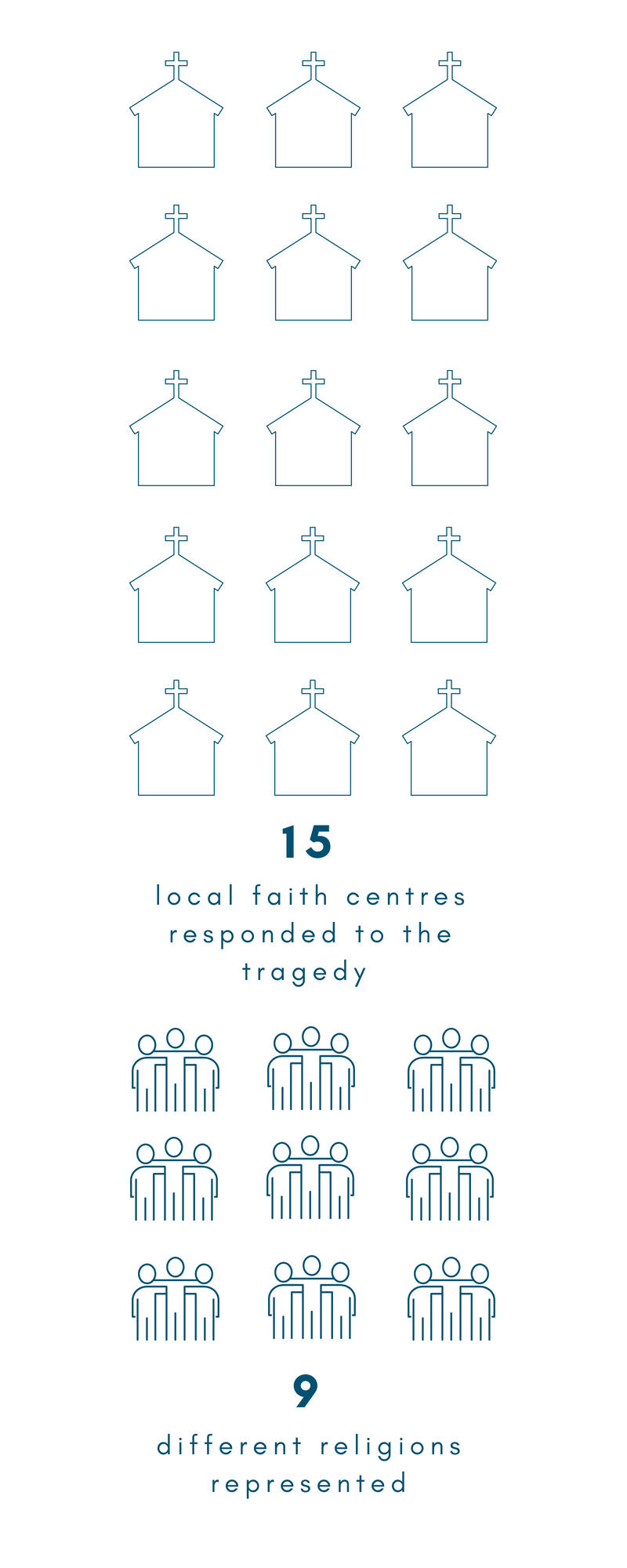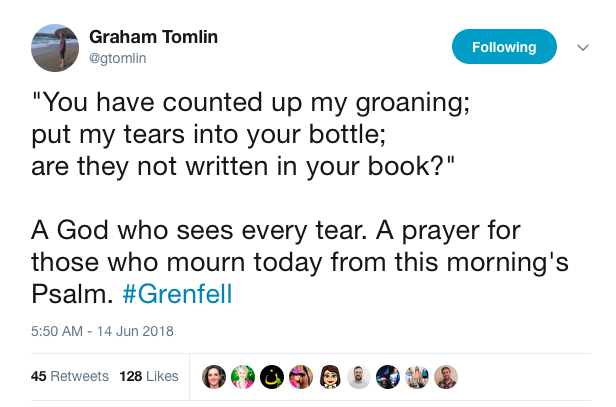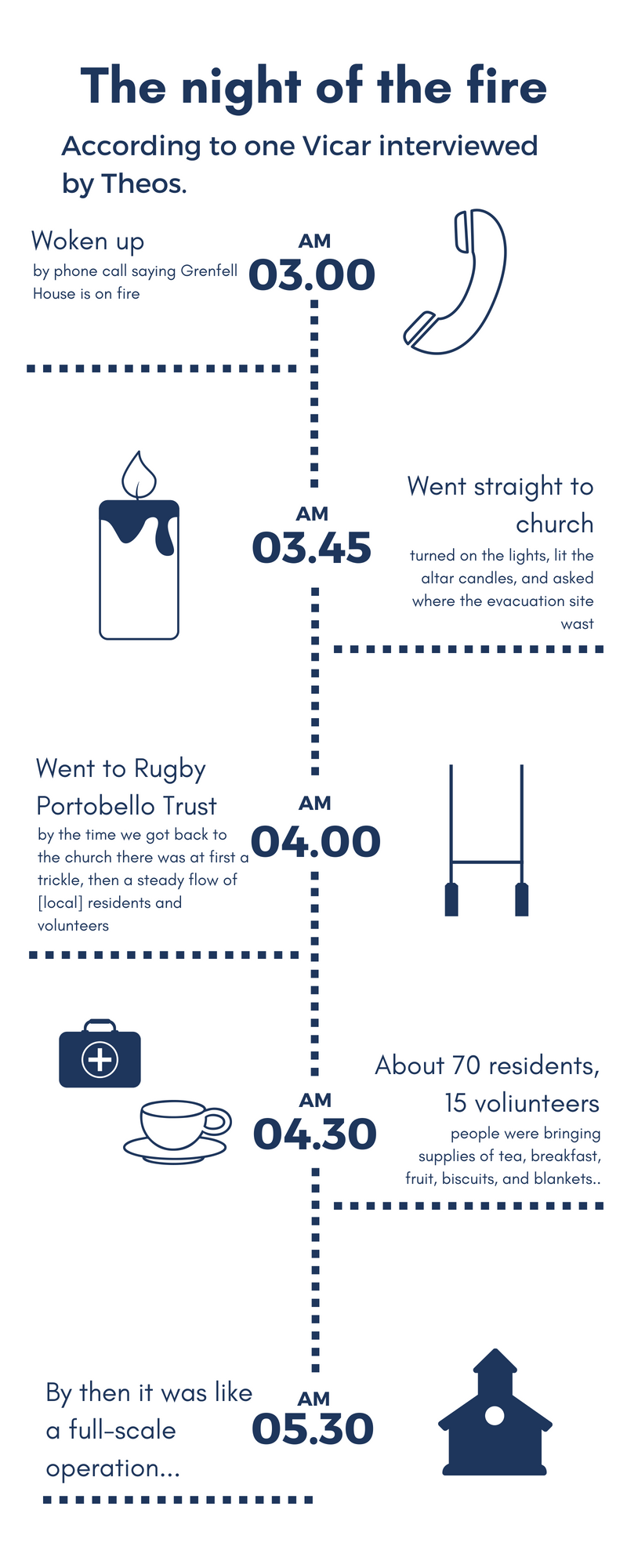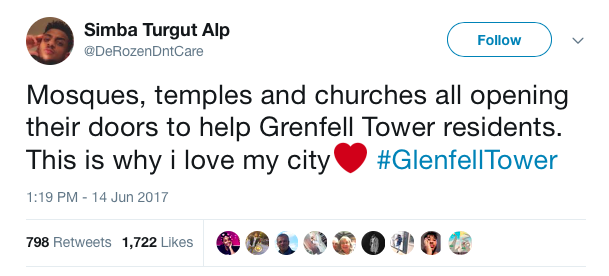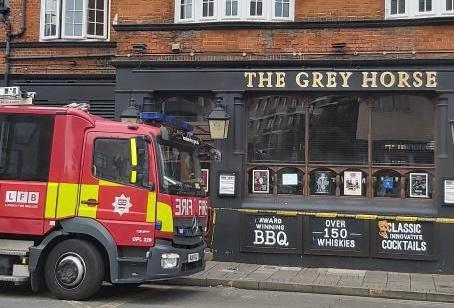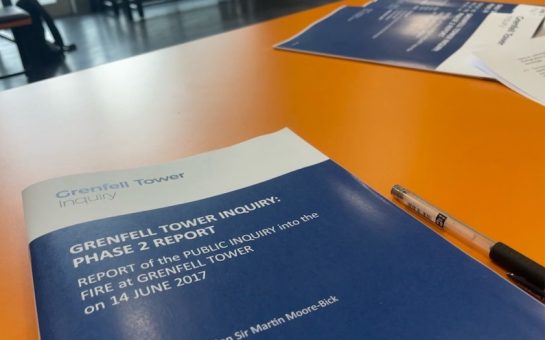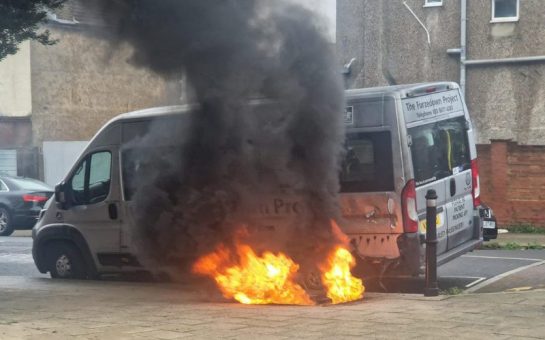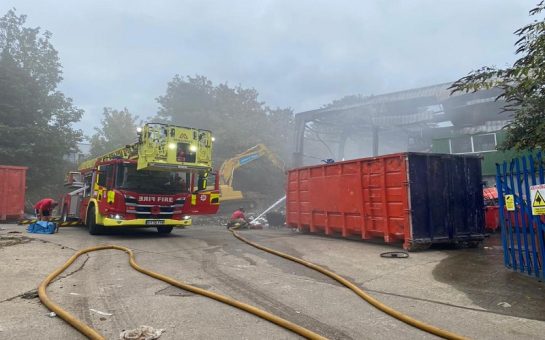Churches and faith groups in Ladbroke Grove helped to commemorate the first anniversary of the Grenfell Tower Fire last week.
St Clement’s, Notting Dale, began a 24 hour prayer vigil on Wednesday 13 June.
At 1.30am, the time the fire began a year previously, prayers were said and the names of the deceased read out.
The vigil concluded with a special mass the following evening, led by Bishop of Kensington Graham Tomlin, at which Revd Mike Long, the minister at the nearby Methodist church, preached.
Mr Long spoke about some much-photographed graffiti beneath the Westway, next to the tower, of the beatitude: “Blessed are those who mourn, for they shall be comforted.”
He said: “Perhaps we should go over there and change that, so that it reads ‘blessed are we who mourn, for we shall be comforted.’”
Earlier that afternoon there was an ecumenical memorial service at St Helen’s, North Kensington, attended by MPs Emma Dent-Coad and David Lammy.
Ms Dent-Coad is the representative for Kensington.
Mr Lammy is an MP in Tottenham who lost his friend, artist Khadija Saye, in the fire.
Special prayers were also said at the nearby al-Manaar mosque.
Faith leaders also helped to organise the silent march which departed at 6pm from outside the Methodist church.
These have taken place every 14th night of each month since the catastrophe, in all weather.
The previous week Bishop Graham, who oversees the Anglican groups in the area, also gave a lecture at the Royal Institute of Mechanical Engineering on ‘rebuilding communities after Grenfell’.
He critiqued an atmosphere of individualism which he said allowed institutions and citizens to view people as means, rather than ends in themselves.
Applying this argument to housing, he said: “If the primary purpose of housing is to generate profit, or to ensure secure investments, then it is inevitable that other priorities will slip down the list.
“If we were to carry on as normal we would be missing a huge opportunity to address some of the deeper issues in our life together.”
The anniversary commemorations come after research was published praising local faith groups for their responses to the fire, stepping in to fill the gap left open by government in the weeks afterward.
The report by Theos, a faith-based thinktank, says that 15 faith centres responded to the disaster by opening their doors and homes to people affected; helping to provide clothes, food, and water; offering space for people to pray and reflect, and giving pastoral care and counselling.
One interviewee, from al-Manaar mosque, said: “We always have dates and bottles of water, especially in Ramadan when people have been fasting.
“We were able to give these to people in need straight away, and as during Ramadan we host a nightly Iftar and have full-scale catering facilities, we were able to feed all the extra volunteers and survivors.
“We served hundreds of people a day for several weeks.”
Another interviewee, a local resident, said: “The council collapsed; groups like St Helen’s church, the Clement James centre and the Westway centre became the local government, as people lost trust in the council.”
Theos suggest that the area’s ethnic diversity means that Ladbroke Grove is more religiously observant than average.
Yvette Williams, of Justice4Grenfell, praised local faith centres and said: “They should go forward with the aim of continuing to work in a multi-faith way as the standard practice in our community.
“Grenfell is the proof that they can do this, God willing.”
